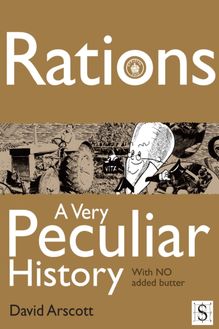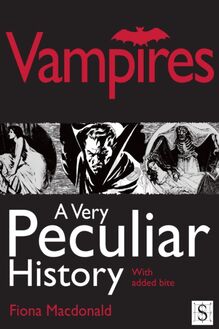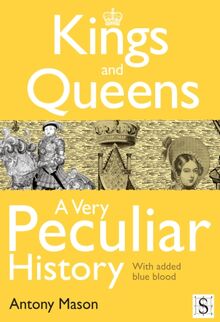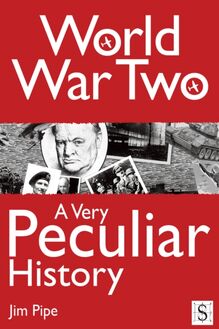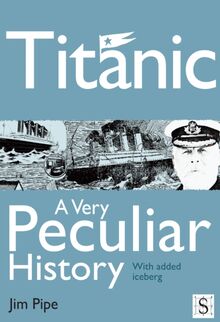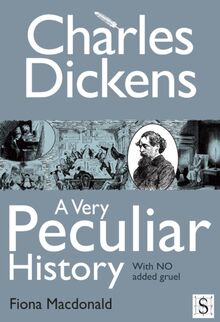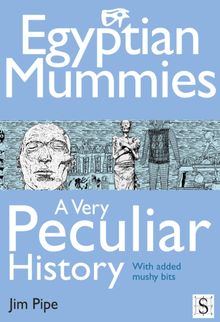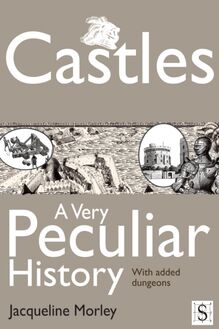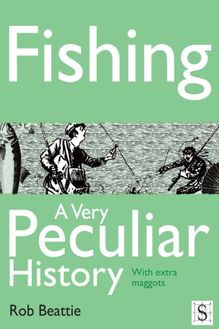World War Two, A Very Peculiar History , livre ebook
64
pages
English
Ebooks
2012
Vous pourrez modifier la taille du texte de cet ouvrage
Obtenez un accès à la bibliothèque pour le consulter en ligne En savoir plus
Découvre YouScribe en t'inscrivant gratuitement
Découvre YouScribe en t'inscrivant gratuitement
64
pages
English
Ebooks
2012
Vous pourrez modifier la taille du texte de cet ouvrage
Obtenez un accès à la bibliothèque pour le consulter en ligne En savoir plus
Publié par
Date de parution
24 février 2012
Nombre de lectures
2
EAN13
9781908759795
Langue
English
Publié par
Date de parution
24 février 2012
Nombre de lectures
2
EAN13
9781908759795
Langue
English
Title Page
WORLD WAR TWO, A VERY PECULIAR HISTORY
Written by
Jim Pipe
Created and designed by David Salariya
Publisher Information
First published in Great Britain in MMXII by Book House, an imprint of
The Salariya Book Company Ltd
25 Marlborough Place, Brighton BN1 1UB
www.salariya.com
www.book-house.co.uk
Digital edition converted and distributed in 2012 by
Andrews UK Limited
www.andrewsuk.com
Editor: Jamie Pitman
Assistant editor: Jodie Leyman
© The Salariya Book Company Ltd MMXII
All rights reserved. No part of this publication may be reproduced, stored in or introduced into a retrieval system or transmitted in any form, or by any means (electronic, mechanical, photocopying, recording or otherwise) without the written permission of the publisher. Any person who does any unauthorised act in relation to this publication may be liable to criminal prosecution and civil claims for damages.
Every effort has been made to trace copyright holders. The Salariya Book Company apologises for any omissions and would be pleased, in such cases, to add an acknowledgement in future editions.
Visit our website at
www.book-house.co.uk
or go to
www.salariya.com
for free electronic versions of:
You Wouldn’t Want to be an Egyptian Mummy!
You Wouldn’t Want to be a Roman Gladiator!
You Wouldnt Want to Join Shackleton’s Polar Expedition!
You Wouldn’t Want to Sail on a 19th-Century Whaling Ship!
Dedication
For my Great Uncle, Jim Sanders
JP
Introduction: Heroes and villains
When I was growing up in the 1960s and 70s, just about every other film on TV seemed to be about World War Two. The conflict comes across as an adventure – dramatic, colourful and jam-packed with material tailor-made for the movies. Need heroes? Then there’s John Wayne landing at D-Day in The Longest Day or Audie Murphy battling his way through Italy in To Hell and Back . Want humour? Watch as Clint Eastwood and his band of misfits sneak through the German lines to get their hands on a secret stash of Nazi treasure in Kelly’s Heroes . Meanwhile the Nazis make perfect movie villains. Telling the good guys from the bad guys couldn’t be easier.
The films are very entertaining, but fact and fiction are often hard to tell apart. The real-life warriors depicted in The Dambusters , The Great Escape and The Battle of Britain aren’t so different from the make-believe heroes in The Guns of Navarone or Where Eagles Dare . And when the shooting starts, the victims usually die cleanly and quickly.
More recent movies such as Saving Private Ryan don’t pull any punches when it comes to showing the carnage on the battlefield. They acknowledge the horror, the heartbreak and the humanity of combatants on both sides. But the focus is still on the hardship and personal heroism of the soldiers.
Ten heroic war movies
1.To Hell and Back (1955). Audie Murphy was initially reluctant to star in this portrayal of his own real-life heroics in France and Italy, which won him the US Medal of Honor. Climbing onto a burning tank (which was on the verge of blowing up), he used its machine gun to stop a German attack almost single-handedly. Unlike most Hollywood pictures of the time – and at Murphy’s insistance – his comrades are killed or wounded on screen as they were in real life.
2.The Bridge on the River Kwai (1957). This film focuses on the clash of wills between two military leaders. One is a Japanese prisoner-of-war (POW) camp commander, the other a British colonel determined to show British superiority by building the best possible bridge. Though based on a novel, the story was inspired by the building of a railway through Burma by British POWs in 1942–3.
3.Ice Cold in Alex (1958). Based on fact, this stars John Mills as a British army captain leading a plucky crew of misfits (including a German spy) across the desert back to British lines for a well-deserved pint. It took several takes to get the final scene right, by which time Mills was allegedly a little the worse for wear.
4.he Guns of Navarone (1961). This big-budget movie depicts the fictional destruction by British commandos and Greek partisans of two huge German guns during the Battle of Crete. It stars David Niven, who during the war served with the Commandos and took part in the D-Day landings.
5.The Longest Day (1962). This three-hour blockbuster, which tells the story of the D-Day landings on the coast of Normandy in June 1944, is packed with stars including John Wayne, Robert Mitchum, Richard Burton and Sean Connery. While clearing a section of the Normandy beach, the film crew uncovered a tank that had been buried in the sand since the original invasion.
6.The Great Escape (1963). Though the film is based on the true story of 76 Allied POWs who escaped from a German prison camp, the scriptwriters added a few thrills and spills of their own, including a memorable stunt where Steve McQueen’s character leaps over a barbed-wire fence on a hijacked motorbike. In the film, several of the main heroes are American. In reality, almost all the escapees were British.
7.Where Eagles Dare (1968). Richard Burton and Clint Eastwood star as Allied secret agents who stage a daring raid on a castle where the Nazis are holding a US general prisoner. Not a film that stands up to much scrutiny, historical or otherwise, with German soldiers falling like ninepins and a brown suitcase containing a limitless supply of dynamite, but it does include some spectacular moments, such as a dramatic cowboy-style fist fight on top of a cable car.
8.Battle of Britain (1969). Forget CGI: this retelling of the 1940 Battle of Britain used the real thing, including 12 Spitfires, 17 Me-109 fighters, 32 Heinkel bombers and a mountain of (blank) ammunition. The film is generally faithful to events, though many of the characters are only loosely based on real people.
9.Schindler’s List (1993). Based on Thomas Keneally’s largely factual novel Schindler’s Ark , this film depicts the true story of a German businessman who employed Polish Jews as cheap labour in his factories and ended up saving 600 of them from being killed in the Auschwitz extermination camp. Though criticised for focusing on the survivors rather than the 6 million Jews who died in the Holocaust, it is a very moving film that gives a feeling of what it was like to be in a concentration camp.
10.Saving Private Ryan (1998). The film starts with a brutal depiction of the landing at Omaha Beach on D-Day. The movie was loosely based on a real story, in which a team is sent to rescue a US paratrooper whose three brothers have recently died in combat.
The courage of those on the front line and on the home front stirs the blood with good reason. Most combatants were ordinary people who did what they had to do in horrific circumstances. Even more incredible perhaps is the fact that so many put the trauma behind them and got on with their everyday lives after the war was over.
There is a danger, however, that action films are replacing real memories about the war. If you believe the movies, it was mostly won by the Americans with a bit of help from the British. By and large the film industry ignores the millions of Russians who died on the Eastern Front, the millions of troops from the British Empire who answered the call to arms, or the countless resistance fighters across Europe who risked not only their own lives but often those of their entire community.
Too rarely on screen do we see the true scale and savagery of the war, especially its impact on civilians. World War Two remains the largest single event in human history, fought across six of the world’s seven continents and all of its oceans. Each of the four main campaigns – in Russia, North Africa and the Mediterranean, Western Europe, and the Far East – was a major war in its own right.
It was also the most destructive conflict in history. It killed 70 million people, left hundreds of millions of others wounded in mind or body, cost more money and damaged more property than any other war in history. Thanks to the indiscriminate bombing of cities and the mass murder of civilians, everyone was in the front line. Until 1941, a British soldier was more likely to get a telegram to say that his wife had been killed in an air raid than the other way around.
Every twist and turn of the war brought a new nightmare: from the screaming dive bombers of the Blitzkrieg and the blistering heat of the North African desert to an icy death on the Russian front or the grisly fate of Japanese soldiers eaten alive by crocodiles on Pacific islands. The bloodbath only ended when the awesome power of the two first atomic bombs showed that doomsday was now only a skip and a jump away.
Daring raids, great escapes
There was no shortage of real heroism and daring escapes during the war:
British
•Dambusters raid . Using a ‘bouncing bomb’ specially developed by Barnes Wallis, the RAF’s 617 Squadron of Lancaster bombers breached the Möhne and Edersee dams, flooding part of the Ruhr valley where much of Germany’s heavy industry lay. The daring attack was a propaganda victory more than anything, and losses among the aircrew were high: 53 out of 133 were killed.
•Operation Frankton . Led by Major Herbert George Hasler, ten ‘cockleshell heroes’ paddled their canoes some 60 km to destroy German warships at Bordeaux. Six ships were damaged using limpet mines, but only two men survived the raid.
•Operation Jaywick . In September 1943, 14 commandos and sailors from the Z Special Unit sank seven Japanese ships in Singapore Ha
